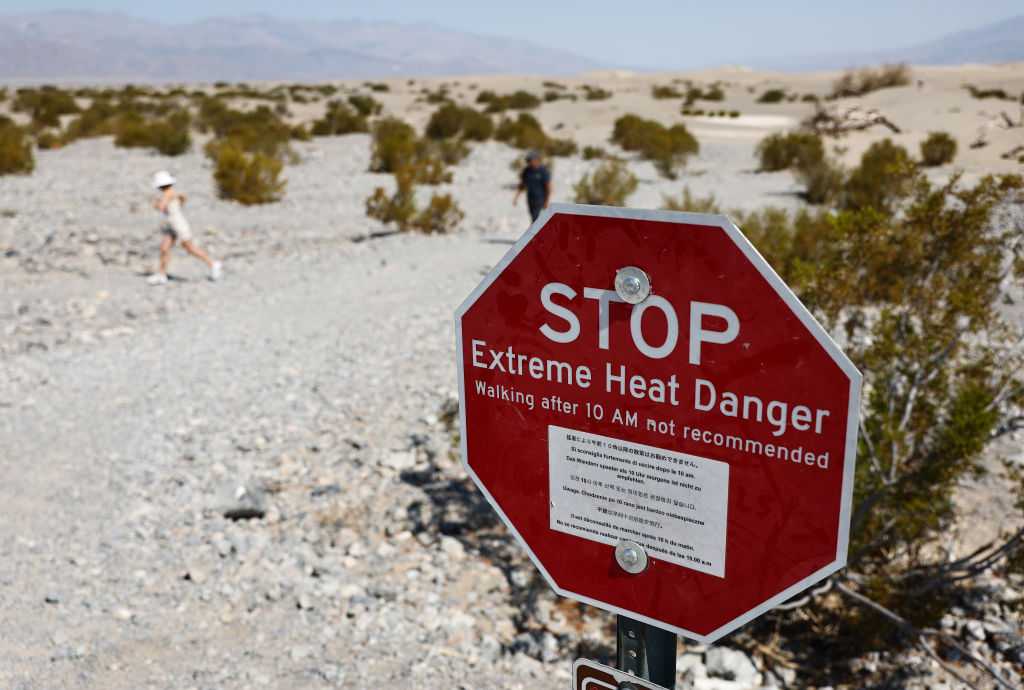
One of the hottest places on Earth is getting even hotter.Death Valley National Park had its hottest meteorological summer (June-August) on record, with an average 24-hour temperature of 104.5°F, according to a National Park Service news release.That sustained scorcher surpasses the old record of 104.2°F, which was set in 2018 and then tied in 2021.Related video above: Different thermometers tell different stories about the heat in Death ValleyJuly created an ovenlike atmosphere when the park’s weather station at Furnace Creek recorded its hottest month ever, the news release said. The park had nine straight days of 125° F or higher, and only seven days in total where temperatures did not reach 120° F. The highest temperature this summer was 129.2° F on July 7. But it wasn’t the just the daytime that was sizzling.Not much relief at nightOvernight lows also played a big role in the extreme heat, NPS said.The average low temperature of 91.9° F meant there was little relief when the sun set. The temperature fell below 80° F only five times from June 1 to August 31, and there were nine days when overnight lows never fell below 100° F, the release said.Park rangers were called to numerous heat-related incidents, including two fatalities where heat was a contributing factor, the news release said. In another incident, a man had to be rescued from sand dunes after losing his flip flops and getting burns on his exposed feet.If you’re planning a trip there soon, don’t expect it to be exactly pleasant just because we’re into September now. The park said you can expect triple-digit temperatures into early October.So caution is still the watchword.”Visitors are advised to stay within a 10-minute walk of an air-conditioned vehicle, drink plenty of water, eat salty snacks, and wear a hat and sunscreen,” the NPS release said.Death Valley is the lowest point in North America, where Badwater Basin sits at 282 feet below sea level and is covered in salt flats. That altitude (or lack thereof) contributes to the extreme heat. Hot air can’t rise over the steep, high mountains surrounding the area, and it gets trapped in ultra-low valley.
One of the hottest places on Earth is getting even hotter.
Death Valley National Park had its hottest meteorological summer (June-August) on record, with an average 24-hour temperature of 104.5°F, according to a National Park Service news release.
That sustained scorcher surpasses the old record of 104.2°F, which was set in 2018 and then tied in 2021.
Related video above: Different thermometers tell different stories about the heat in Death Valley
July created an ovenlike atmosphere when the park’s weather station at Furnace Creek recorded its hottest month ever, the news release said. The park had nine straight days of 125° F or higher, and only seven days in total where temperatures did not reach 120° F.
The highest temperature this summer was 129.2° F on July 7. But it wasn’t the just the daytime that was sizzling.
Not much relief at night
Overnight lows also played a big role in the extreme heat, NPS said.
The average low temperature of 91.9° F meant there was little relief when the sun set. The temperature fell below 80° F only five times from June 1 to August 31, and there were nine days when overnight lows never fell below 100° F, the release said.
Park rangers were called to numerous heat-related incidents, including two fatalities where heat was a contributing factor, the news release said. In another incident, a man had to be rescued from sand dunes after losing his flip flops and getting burns on his exposed feet.
If you’re planning a trip there soon, don’t expect it to be exactly pleasant just because we’re into September now. The park said you can expect triple-digit temperatures into early October.
So caution is still the watchword.
“Visitors are advised to stay within a 10-minute walk of an air-conditioned vehicle, drink plenty of water, eat salty snacks, and wear a hat and sunscreen,” the NPS release said.
Death Valley is the lowest point in North America, where Badwater Basin sits at 282 feet below sea level and is covered in salt flats. That altitude (or lack thereof) contributes to the extreme heat. Hot air can’t rise over the steep, high mountains surrounding the area, and it gets trapped in ultra-low valley.
Source
#Death #Valley #National #Park #hottest #summer #record
